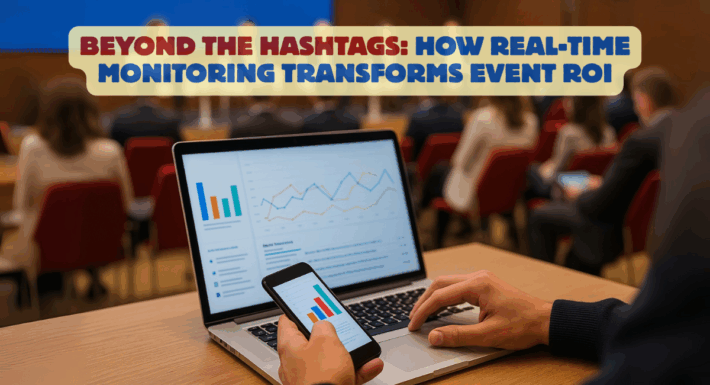Executive News Briefing: How to Keep Your Leadership Team Informed in Today’s 24/7 News Cycle

Your CEO steps into a critical investor call, confident and prepared. Within minutes, a board member references a competitor’s announcement from three hours ago—one that completely shifts the conversation’s trajectory. Your executive freezes, clearly caught off-guard, while the room’s energy shifts from confidence to concern. This scenario could have been prevented with an effective executive news briefing system.
For public relations professionals, implementing comprehensive executive news briefing processes isn’t just about reputation management—it’s about enabling strategic advantage. When your leadership team operates with real-time intelligence through structured executive news briefings, they can seize opportunities, navigate challenges, and lead conversations rather than react to them.
The Hidden Cost of Information Gaps in Executive Decision-Making
Today’s executives face an unprecedented information challenge that makes executive news briefing systems more critical than ever. The traditional morning newspaper and evening news cycle has been replaced by continuous streams of breaking news, social media updates, competitor announcements, and industry developments.
Consider the ripple effects when executives lack timely intelligence despite having access to executive news briefing resources. A pharmaceutical CEO who misses overnight regulatory changes may provide outdated guidance during earnings calls. A technology executive unaware of a competitor’s product launch might miss strategic pivoting opportunities. A retail leader who doesn’t know about supply chain disruptions could make inventory decisions that impact quarterly performance.
These information gaps don’t just create embarrassing moments—they result in missed opportunities, reactive strategies, and diminished competitive positioning. This is precisely why strategic media analysis becomes essential for identifying these critical developments before they impact decision-making.
The Complexity of Modern Information Environments
The challenge extends beyond volume to complexity, making executive news briefing systems more valuable than traditional approaches. Modern executives must track multiple information streams simultaneously: traditional media coverage, social media conversations, industry publications, competitor activities, regulatory changes, and emerging trends. Each stream operates on different timelines and requires different levels of analysis and context.
Furthermore, the global nature of business means relevant developments can emerge from any time zone. A manufacturing disruption in Southeast Asia at 2 AM Eastern Time can impact stock prices by market open. A regulatory announcement in Europe during US evening hours can reshape strategic planning discussions scheduled for the next morning—all reasons why 24/7 situation management capabilities are essential.
Why Traditional Briefing Methods Fall Short of Executive News Briefing Standards
Many organizations still rely on outdated briefing approaches that can’t keep pace with today’s information velocity. Traditional methods often suffer from several critical limitations that leave executives vulnerable to information gaps, unlike comprehensive executive news briefing systems.
Internal team briefings, while valuable for organizational context, typically lack the breadth and speed necessary for comprehensive market intelligence. Team members focused on specific functions may miss developments outside their immediate areas of expertise. Additionally, internal teams often lack the analytical resources to synthesize complex information streams into actionable insights—a core component of professional executive news briefing services.
Automated news alerts and RSS feeds create information overload rather than intelligence. Executives receive hundreds of potentially relevant articles but lack the time and context to identify which developments require immediate attention versus those that can wait for weekly reviews. This is where structured executive news briefing systems provide superior value.
The Analysis and Context Gap
Raw information without analysis provides limited value for executive decision-making, highlighting the importance of professional executive news briefing services. A competitor’s product announcement requires context about market positioning, timing implications, and strategic response options. A regulatory change needs interpretation regarding compliance requirements, competitive impacts, and operational adjustments.
Most executives lack the time to perform this analysis themselves, while their teams may lack the broad perspective necessary for strategic synthesis. This creates a critical gap between information availability and actionable intelligence—exactly what executive news briefing systems are designed to address.
Building Effective Executive News Briefing Systems
Successful executive news briefing systems share several key characteristics that enable timely, relevant, and actionable intelligence delivery. Understanding these elements helps organizations design executive news briefing approaches that truly serve leadership needs.
Comprehensive source monitoring ensures no critical developments slip through the cracks in your executive news briefing system. This includes traditional media outlets, industry publications, social media platforms, competitor communications, regulatory bodies, and emerging information sources. The goal is creating a complete picture of the information environment relevant to executive decision-making.
Real-time processing capabilities enable rapid identification and assessment of breaking developments within executive news briefing workflows. Advanced media monitoring systems can track thousands of sources simultaneously, identifying relevant developments within minutes of publication and flagging urgent items for immediate attention.
The Power of Professional Analysis in Executive News Briefing
Professional analysts bring critical value to executive news briefing systems through their ability to provide context, identify patterns, and synthesize complex information. Skilled analysts understand industry dynamics, competitive landscapes, and strategic implications that automated systems cannot replicate.
Expert analysts can quickly assess the significance of breaking developments, identifying which require immediate executive attention versus those that can be included in routine executive news briefings. This filtering capability prevents information overload while ensuring critical developments receive appropriate priority.
Additionally, professional analysts can provide strategic context that transforms raw information into actionable intelligence within executive news briefing formats. They can explain why a development matters, what it means for competitive positioning, and what response options merit consideration.
Delivering Executive News Briefing Intelligence That Drives Action
The most sophisticated intelligence gathering means nothing if information doesn’t reach executives in formats that enable quick comprehension and strategic application. Effective executive news briefing formats balance comprehensiveness with accessibility, ensuring busy executives can quickly grasp key developments and their implications.
Executive-ready formatting presents information in scannable, prioritized formats that respect leadership time constraints. This might include executive summaries that highlight the three most critical developments, detailed sections for items requiring deeper understanding, and clear action items or decision points—all hallmarks of professional executive news briefing services.
Timing optimization ensures intelligence reaches executives when they can best utilize it. Executive news briefings delivered before daily schedules begin allow leaders to incorporate insights into meetings, conversations, and strategic discussions throughout the day.
Customization for Leadership Needs
Different executives have different information requirements based on their roles, responsibilities, and strategic priorities. A CEO needs broad market intelligence and competitive positioning insights, while a Chief Technology Officer requires a deeper focus on industry innovations and regulatory changes affecting technology development.
Effective executive news briefing systems accommodate these varying needs through customizable content streams that highlight relevant developments while maintaining awareness of broader market dynamics. This customization ensures each executive receives maximum value from their executive news briefing investment.
Crisis Prevention Through Proactive Executive News Briefing
Perhaps the most valuable aspect of comprehensive executive news briefing systems is their ability to prevent crises through early warning and rapid response capabilities. By identifying emerging issues before they escalate, organizations can shift from reactive damage control to proactive reputation management.
Early warning systems within executive news briefing frameworks can identify negative sentiment trends, emerging competitive threats, regulatory changes, and potential reputation risks before they impact business operations. This advance notice enables strategic responses that minimize negative impacts and may even create competitive advantages.
For instance, early intelligence about supply chain disruptions through executive news briefing channels allows executives to communicate proactively with stakeholders, adjust expectations, and implement contingency plans. Without this advance warning, the same disruption might blindside leadership and require reactive crisis management.
Implementing Executive News Briefing Solutions
Organizations ready to enhance their executive news briefing capabilities should consider several key implementation factors that determine program success. The most effective approaches combine technological capabilities with human expertise to create comprehensive executive news briefing systems.
Technology infrastructure provides the foundation for comprehensive monitoring and rapid information processing in executive news briefing systems. Modern systems can track thousands of sources simultaneously, identify relevant developments using advanced filtering algorithms, and deliver information through multiple channels optimized for executive consumption.
However, technology alone cannot replace the analytical capabilities that skilled professionals bring to executive news briefing synthesis. The most effective systems combine automated monitoring with expert analysis to provide both comprehensive coverage and strategic insight.
Measuring Executive News Briefing Impact
Successful executive news briefing programs include mechanisms for measuring impact and continuously improving service delivery. This might include tracking executive feedback on briefing relevance, measuring response times to breaking developments, and assessing the strategic value of intelligence provided through executive news briefing systems.
Regular program evaluation ensures executive news briefing systems continue meeting evolving executive needs while identifying opportunities for enhancement. This continuous improvement approach maximizes the strategic value of executive news briefing investments.
The Strategic Advantage of Informed Leadership Through Executive News Briefing
Organizations that invest in comprehensive executive news briefing systems gain significant competitive advantages through more informed decision-making, proactive opportunity identification, and enhanced crisis prevention capabilities. These advantages compound over time, creating sustainable strategic benefits.
Informed executives can participate more effectively in industry conversations, identify emerging opportunities before competitors, and make strategic decisions based on comprehensive market intelligence delivered through executive news briefing systems. This enhanced capability translates directly into improved business performance and competitive positioning.
Furthermore, the confidence that comes from comprehensive intelligence enables more aggressive strategic moves and faster decision-making. When executives trust their executive news briefing foundation, they can act decisively rather than waiting for additional confirmation or analysis.
Building Long-Term Executive News Briefing Capabilities
The most successful organizations view executive news briefing systems as long-term strategic investments rather than operational expenses. By building comprehensive intelligence capabilities, organizations create sustainable competitive advantages that grow stronger over time.
These executive news briefing capabilities become particularly valuable during crisis situations, when rapid access to comprehensive intelligence can mean the difference between effective crisis management and reactive damage control. Continuous situation management becomes possible when executives have access to real-time intelligence and professional analysis through structured executive news briefing systems.
The investment in executive news briefing systems pays dividends through improved strategic decision-making, enhanced competitive positioning, and reduced crisis management costs. Organizations that recognize this strategic value position themselves for sustained success in increasingly complex market environments.
Frequently Asked Questions About Executive News Briefing
What is an executive news briefing system?
An executive news briefing system is a comprehensive intelligence delivery process that provides leadership teams with timely, relevant, and actionable information about market developments, competitive activities, and industry trends. These systems combine advanced media monitoring with professional analysis to prevent executives from being blindsided by critical developments.
Why do traditional briefing methods fall short?
Traditional briefing methods often lack the breadth, speed, and analytical depth necessary for comprehensive market intelligence. They typically suffer from information overload, limited coverage of emerging sources, and lack the real-time processing capabilities needed in today’s 24/7 news environment.
How do executive news briefings prevent crises?
Executive news briefings prevent crises through early warning systems that identify emerging issues before they escalate. By tracking negative sentiment trends, competitive threats, and regulatory changes, organizations can shift from reactive damage control to proactive reputation management.
Conclusion: The Future of Executive News Briefing
In today’s rapidly evolving business landscape, executive news briefing systems represent more than a convenience—they’re a strategic necessity. Organizations that implement comprehensive executive news briefing capabilities position their leadership teams for success by ensuring they’re never caught off-guard by market developments.
The most effective executive news briefing systems combine advanced technology with human expertise to deliver timely, relevant, and actionable intelligence. As the information environment continues to accelerate, these systems will become increasingly critical for maintaining competitive advantage and enabling proactive leadership.
Ready to transform your executive communication strategy? Consider how professional executive news briefing services can enhance your organization’s decision-making capabilities and strategic positioning in today’s dynamic marketplace.

Ted Skinner
Ted Skinner is Vice President of Marketing at Fullintel, where he focuses on developing practical applications of AI in media monitoring and strategic communication measurement. With extensive experience in crisis communication strategy and competitive intelligence, Ted specializes in helping PR professionals implement effective measurement frameworks that demonstrate tangible business value.
Ted regularly contributes to industry discussions on AI implementation in PR, media monitoring best practices, and the evolution of measurement methodologies. His work centers on bridging the gap between complex technical capabilities and actionable strategic insights for communication professionals.
Read more of Ted’s insights on AI-powered PR strategies and follow his latest thinking on modern measurement approaches.
Ted Skinner is the VP of Marketing at Fullintel with extensive experience in AI implementation for public relations and media monitoring. A recognized expert in crisis communication strategy and competitive intelligence, Ted specializes in developing practical applications for AI in PR workflows. His thought leadership focuses on helping PR professionals leverage technology to enhance strategic communications while maintaining the human insight that drives successful media relations.
Read more of Ted’s insights on AI-powered PR strategies and follow his latest thinking on modern measurement approaches.




